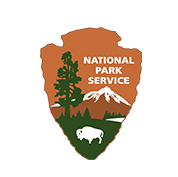Single Publication
Could not determine your location.
2023 - York Fire Burned Area Emergency Response (BAER)
Unit Information
Agency Name: National Park Service

Agency Name: National Park Service

Incident Contacts
Behind the Scenes of a Burned Area Emergency Response
2023 - York Fire Burned Area Emergency Response (BAER)
Publication Type: News 08/20/2023
A successful Burned Area Emergency Response (BAER) requires a team of diverse specialists. Some work in the field, while others work behind the scenes. Kenny and Emily were part of the behind-the-scenes team on the York Fire!
Kenny is a cartographer for the U.S. Fish and Wildlife Service who manages geospatial systems. He provides the BAER team with standardized data collection technology, geospatial metadata creation, geospatial analysis, customized maps, and general technical support. He makes sure the field staff are using technology that generates accurate, defensible data and finds solutions when they have Geographic Information System problems.
Kenny mapped information including how many acres burned, the location of resources, and the location of damage in the York Fire footprint. This “spatial orientation” allows specialists and managers to see and track the location of resources on the landscape so that they better understand the interconnection of resources. Our world is spatially driven and specialists like Kenny help land managers and the public appreciate the importance of the “where.”
Emily is a district wildlife biologist with the Bureau of Land Management (BLM). She got involved with BAER during her time as a wildland fire resource advisor (READ). Her diverse ecology and policy experience allows her to serve many roles on a BAER assignment.
Emily helped prepare post-York Fire treatment plans. She provided guidance to National Park Service (NPS) and BLM staff as they documented their environmental resource concerns and decided whether to intervene in the natural recovery process. She designed invasive plant treatment plans, wrote data justifications, and performed cost estimates. She also began the environmental compliance process, coordinating with the US Fish and Wildlife Service (USFWS) to ensure post-fire treatments have no effects or mitigated effects on listed species.
Non-native invasive plants are a major concern after the York Fire. Invasives establish themselves in recently disturbed, open spaces, which can result in the loss of diverse native plant communities. This can change the wildfire regime of an area and have a cascading impact on the behavior of future fires. The first year after a fire is critical to ensure that the desired recovery occurs over the 3-4 years a BAER project is funded. Land managers will collaborate with other agencies and organizations to implement the treatments as designed in the BAER process. The York Fire experienced low soil burn severity, so Emily and Kenny hope for a strong recovery in the upcoming growing seasons.
Though humans often want to do everything possible to help, it’s important for us to adapt to the changing environment and manage our own actions. Often, the best way for us to allow a burned area to recover is by avoiding additional disturbances, like off-road vehicle use or hiking and camping in non-designated areas. The public can support the recovery of native vegetation in the fire footprint by being patient and keeping our distance. The faster the area recovers, the sooner we can enjoy the area again.

 InciWeb
InciWeb